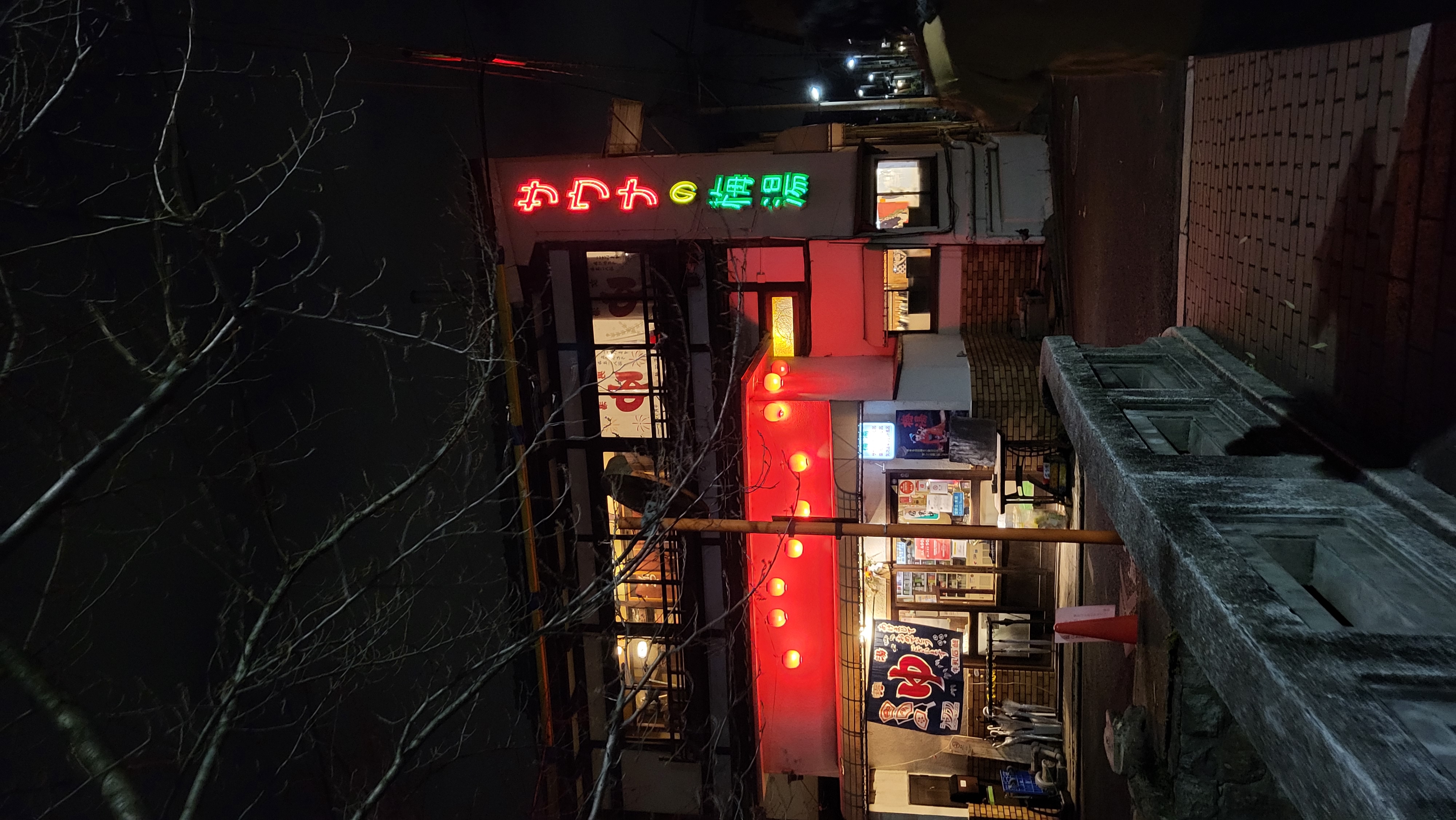Onsen and Sento: a guide
A basic guide for visiting onsen and sento in Japan as well as some recommendations by Saúl.
When I was very little, while watching what at the time I did not know were Japanese cartoons (anime), I saw Doraemon bathing in a very strange bathroom compared to that to which I was accostumed in Spain. My child self really wanted to try one of those here in Spain, though.
Then, as the years passed and I was 12 or 13 years old, I read about them in the book “A Geek in Japan”, and decided I really needed to try visiting an onsen 温泉 or, at the very least, a sentō 銭湯. Have you ever heard about them? In my family, my parents know about it because I really enthusiastically shared which ones I was going to visit during my trip to Japan, but I did not mention to them the etiquette behind being in this kind of environments. Thus, let me tell you about onsen and sento, my experiences, and some recommendations!
Onsen 温泉 and sentō 銭湯, similar, but not the same.
Both onsen and sento are a type of public bathhouse, “public” as in “bathing with other people”. People usually pay at the entrance some fee and then access the showering area prior to the bathing area (or “ofuro” お風呂). These kind of public baths grew considerably during the Edo period (1600 AD - 1860 AD), mainly because a large part of the population did not have a specific room at home where to shower or take a bath, so these facilities catered the need while also solidifying themselves as an important piece of Japanese culture and lifestyle (talk about meeting the demands of your customer base, folks!).
I just mentioned one would pay a small fee, correct? We can even see that part of the process contained in the characters for sento:
- 銭: coin (after all, it is a service!)
- 湯: hot water / hot spring
If we analyze the characters behind onsen, though:
- 温: warm
- 泉: natural spring of water
Here lies the key difference between the two: the source of the water.
On the one hand, onsen, by law, requires for the water to be from natural thermal waters. Conversely, sento are, put simply, heated tap water. This distinction ensures that people know when they are bathing in regular water and when they are bathing in water from hot springs that may contain beneficial minerals. Moreover, onsen, due to their nature, may be more luxurious and may get quite pricey depending on the place, usually due to the exquisite water source, the views that mellow the hot spring, or both.
To better see the differences at a glance, check these two 360º views. First, a popular sento in Tokyo: 新生湯 Shinsei-yu.
Then, an onsen in Kyoto: 天山の湯 Tenzan no Yu.
Some places might have really similar facilities, but remember: the key difference is the source of the water. Also, before moving on with the post, because people cannot take pictures inside the bathing area (and very understandably so), I will resort to drawings and online pictures, and feel free to come back to these two 360º Google Maps views!
Onsen Protocol and Etiquette
Whether you are visiting and onsen or a sento, the protocol is similar. For the sake of brevity, I’ll refer to sento/onsen interchangeably here. Let’s go over the main steps and then go in detail one by one:
- Leave your shoes at the entrance.
- Pay the entrance fees; most likely, you’ll be provided with a small modesty towel.
- Access the corresponding locker room depending on your sex: 女 means women, 男 indicates men.
- Undress completely: no clothes, no shoes.
- With your towel and your locker key, access the main area.
- Get a stool and sit in the showering area. Shower completely with soap. When finished, wash yourself completely with cold water. No soap should be left!
- Enter the baths (ofuro).
- Relax!
- When finished, return to the locker room, return the towel, get dressed, and get hydrated!
Most onsens (like other places in Japan) have some lockers in the entrance or just a large space where to leave your shoes and maybe acquire some slippers. Do so, you don’t want to get the inside dirty! That way it is kept really clean. When you pay for the entrance, usually you’ll be provided with a small “modesty towel”.
What is a “modesty towel”? Have you ever watched Doraemon? This TV show was a CORE part of my childhood. If you have watched as many episodes of it as I have throughout the years, there is a high chance you have seen Doraemon, Nobita, or any other characters relaxing in a bathhouse or at home with a small towel on top of their head. This is what we can call a “modesty towel”. Some people use it to cover their private parts, other people use it to wash and scrub themselves better, and others soak it in cold water and fold it over their head or forehead while sitting in the ofuro in order to refresh themselves.
Notice the small towels on top of Doraemon and Minidora’s head? These are the modesty towels. Image courtesy of Fujiko Pro (source).
With your towel on hand and locker key, head to the changing room. The area for men is usually preceded by a dark blue curtain with 男, and the area for women by an intense pink curtain with 女. Important: both of them will have a ゆ as well, but that just indicates that the hot water is following that path.
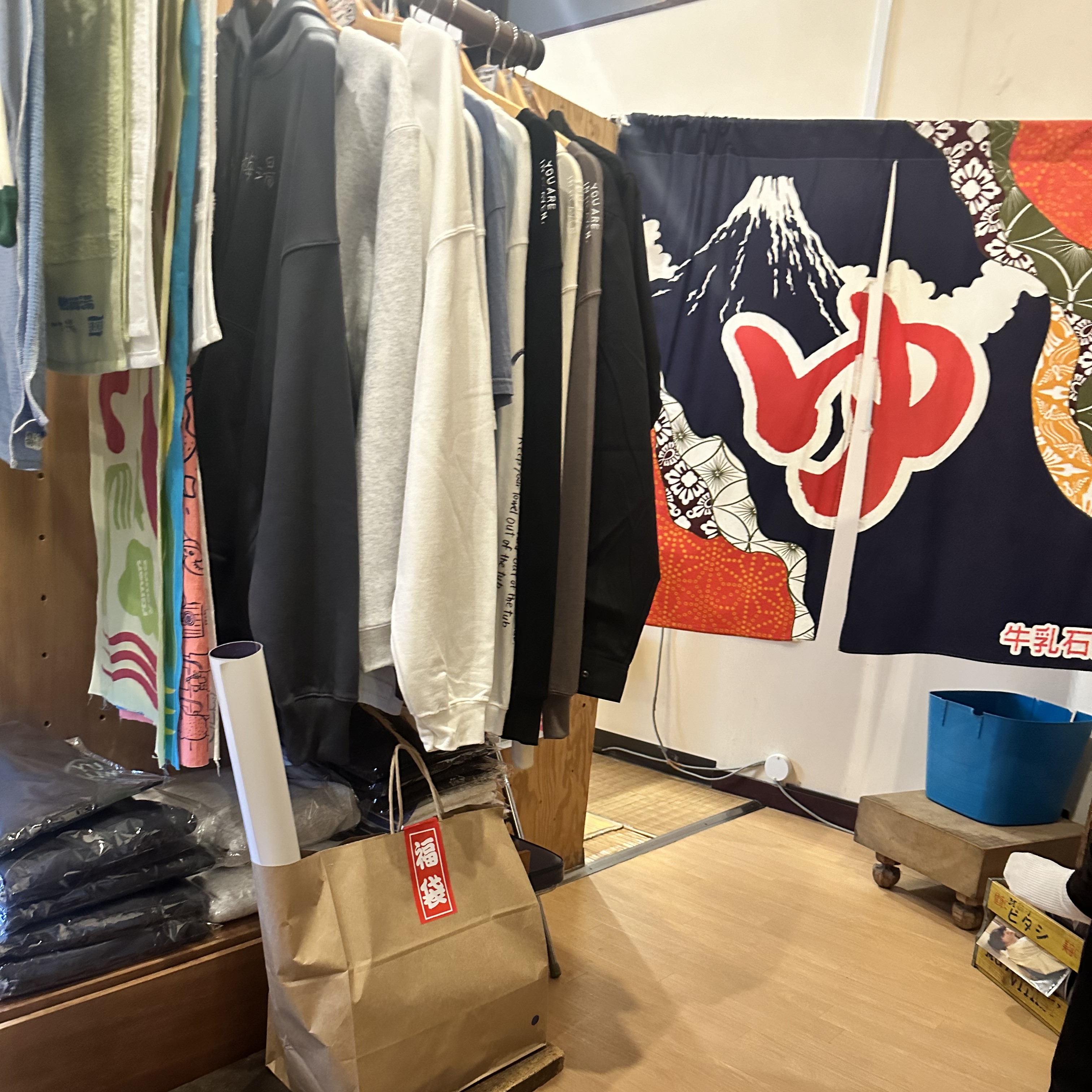 Past this area, one would reach the male dressing room.
Past this area, one would reach the male dressing room.
When I said in step 4 to “undress completely”, I meant it. No clothes. Zero. Nada. No swimsuits either! Take everything off, store it in the locker, and head into the main area.
Depending on the onsen, you might be welcomed by a small intermediate area with some lavatories and free amenities(at least that is what I found in the places I have visited so far), like toothbrushes or shaving razors for your beard and stylish mustache (if any. Clearly does not apply to me). Some people bring their own ones in a small case, so do as you prefer if you feel the need to. Remember that these are public baths, so it is not surprising to see people, well, doing basic hygiene chores.
At the shower area there usually is shampoo and body gel for you to use and thoroughly clean yourself with. Avoid splashing too much in order not to disturb other people (so, put into other words, just be polite, okie dokie?). You can use the towel to help you lather and scrub your body, and then grab one of the buckets you might find nearby and clean yourself with warm or cold water. Make sure there is no soap left in your body! That way, you will contribute towards keeping the ofuro as pure and clean as possible.
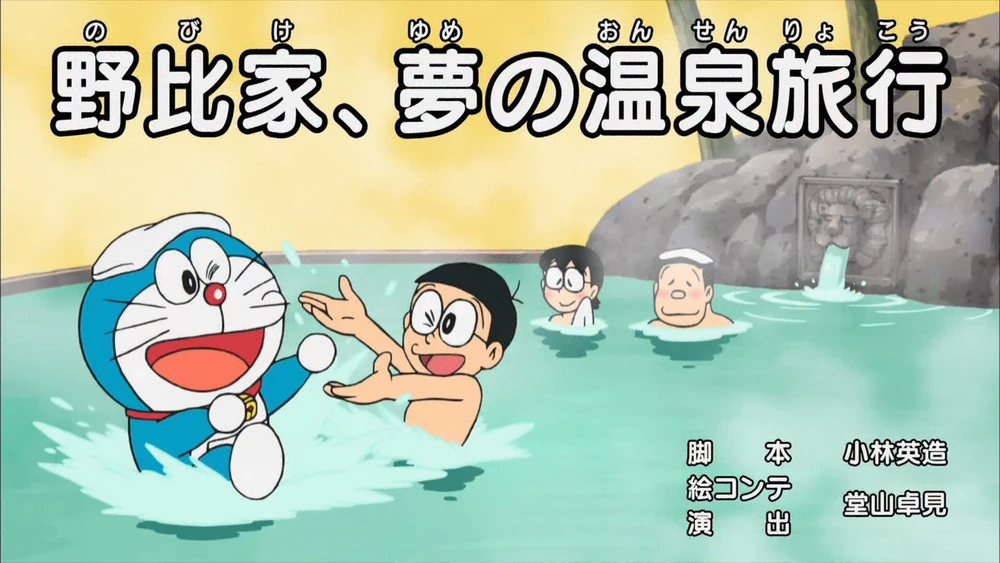 Here, Nobita and Doraemon are splashing. Please don’t splash. Please don’t follow their example this time (* ̄3 ̄)╭. Image source: Doraemon Fandom
Here, Nobita and Doraemon are splashing. Please don’t splash. Please don’t follow their example this time (* ̄3 ̄)╭. Image source: Doraemon Fandom
This last bucket of water will not only help remove any remaining soap residue, but also regulate your body temperature before entering the ofuro. These large baths can vary greatly in temperature, from a cold 20ºC (or lower), to a warm 38ºC or a really hot 42ºC. Temperatures will vary according to each establishment’s preferences. Also, there is a chance some of them will have natural scents added to them.
While in the ofuro: relax, that is the main goal. There may be strips of news articles in the walls for you to read or boards with the history of the establishment. You can also talk (not too loud) with other people about your day. If you feel the water in certain ofuro might be too hot, dampen your towel with some cold water and place it on your forehead; you will feel the difference, trust me!
Do you want to check out a different ofuro? Then hop out and, before going into a new one, quickly wash yourself with clean water from the showering area. This will help keeping each ofuro clean and with its own water. Imagine you came from a lavender-scented ofuro and hopped into a just-thermal-water ofuro. You would be mixing them!!! Nononono. o((>ω< ))o
After your desired time at the main area, which can range from 15 minutes of basic hygiene to 1 hour for full relaxation (longer than 1 hour might make your blood pressure drop, so be careful, okay?), you may leave. In the case of onsen, because of the waters rich in natural minerals, some people choose to hop out of the ofuro and leave the water to dry on their skin for a bit to absorb them before leaving. Head to the middle zone between the locker room and the showering area, dry yourself as much as you can with the towel they gave you, and dispose of it in the provided containers. Some establishments provide, too, blow-dryers and lotions free to use. After a long time in a warm environment, your skin might be dry, so it is really convenient!
Finally, once you are out of the onsen, get something to drink. All the cleaning, relaxing, and sweating (especially the sweating) might make you feel light-headed. Traditionally, people drink some milk, but it is up to you! Remember that something healthy is better 😎
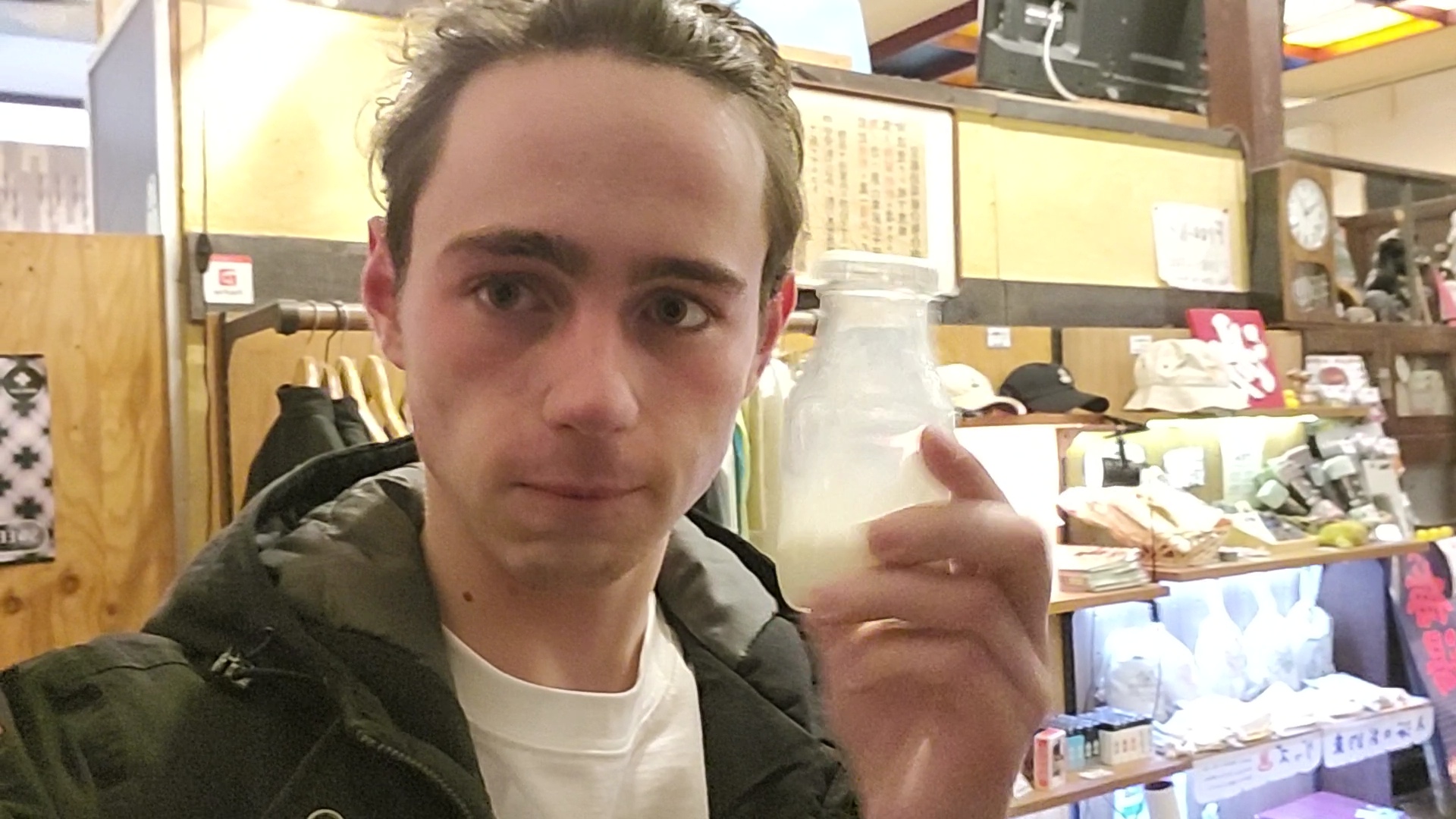 Of course, I indulged, too, in some refreshing milk while leaving the onsen!
Of course, I indulged, too, in some refreshing milk while leaving the onsen!
Important aspects to consider!!!:
- in case you forget any step, fret not! Onsens usually have diagrams explaining what to do and in what order!
- after leaving your showering spot, gently splash it with clean water to leave it clean and without soap residue for the next person.
- DO NOT dive underwater in the ofuros and DO NOT submerge your towel in its water. You may let your towel rest on your head, the edge of the bathtub, or any shelf nearby. Remember this maxim: keep the ofuro pure, the only thing in it should be people.
- be polite, don’t run, and relax :)
My experience at an onsen and sento
The title for this section should be “just at sento”, because I recently found out I had visited sento only (unfortunately). The first place I visited I mixed it up with an onsen, but it was a sento in reality, so I am yet to cross it off my list! Therefore, I have visited 2 sento in total. I would not call myself an onsen-connoisseur, but I will argue that my excitement towards finally visiting them truly cemented the knowledge I had gathered from my Japanese-culture books and articles throughout the years. Thus, let me tell you about these two places.
The first sento: 梅湯 Ume-yu, was located in Kyoto, and before heading there I informed my kendo friends about the protocol we should follow inside (I even quizzed them on it, asking trick questions ;). When we got there, the four of us entered the male side and relaxed after a long day of walking around all of Kyoto (just typing this makes me all warm and happy inside already!). This peace and quiet helped us reflect and what we had done so far and the friendship we had built thanks to being part of the kendo team. Moreover, who would have thought we would be together in Japan? I think this was extraordinary. While still in Kyoto, we re-visited the same sento another time. So much we liked it!
Then, on the day I was returning to Ningbo from Tokyo and my friends and I were parting ways temporarily, I woke up early in the morning and headed to another sento. This one had a special scented ofuro; it was lavender-scented during my visit, and the water was as purple as an amethyst. I somehow landed in a small conversation with some Japanese people that were curious about where I was from, and it was a nice experience overall. I guess not too many foreigners visit sento/onsen really early in the morning ;). Also, for my fellow otaku readers, this one is right next to Akihabara, so it is a nice way to include it in your morning or afternoon plan. That is what I did before strolling around in the search of some mangas and videogames (๑•̀ㅂ•́)و✧
 Does the ゆ ring a bell? Remember that is is a really common way to signal a public bathhouse. Also, this is the only picture I took, from outside the building, but it was enough to remember the place! Check out the google maps link below to see the facility.
Does the ゆ ring a bell? Remember that is is a really common way to signal a public bathhouse. Also, this is the only picture I took, from outside the building, but it was enough to remember the place! Check out the google maps link below to see the facility.
In case you are curious, these are the establishments:
- Ume-yu 梅湯 (Kyoto)
- RAKU SPA 1010 Kanda (Tokyo)
Final thoughts
Oh, how much I enjoyed these experiences, it seemed so natural and felt so relaxing! I cannot wait to go again. I understand why so many Japanese people appreciate this part of their culture so much. I also hope this small introduction to onsen and sento was useful to you :).
Once I am back to an onsen or sento, I will make a new post with my experience there!
Regards,
Saúl FG
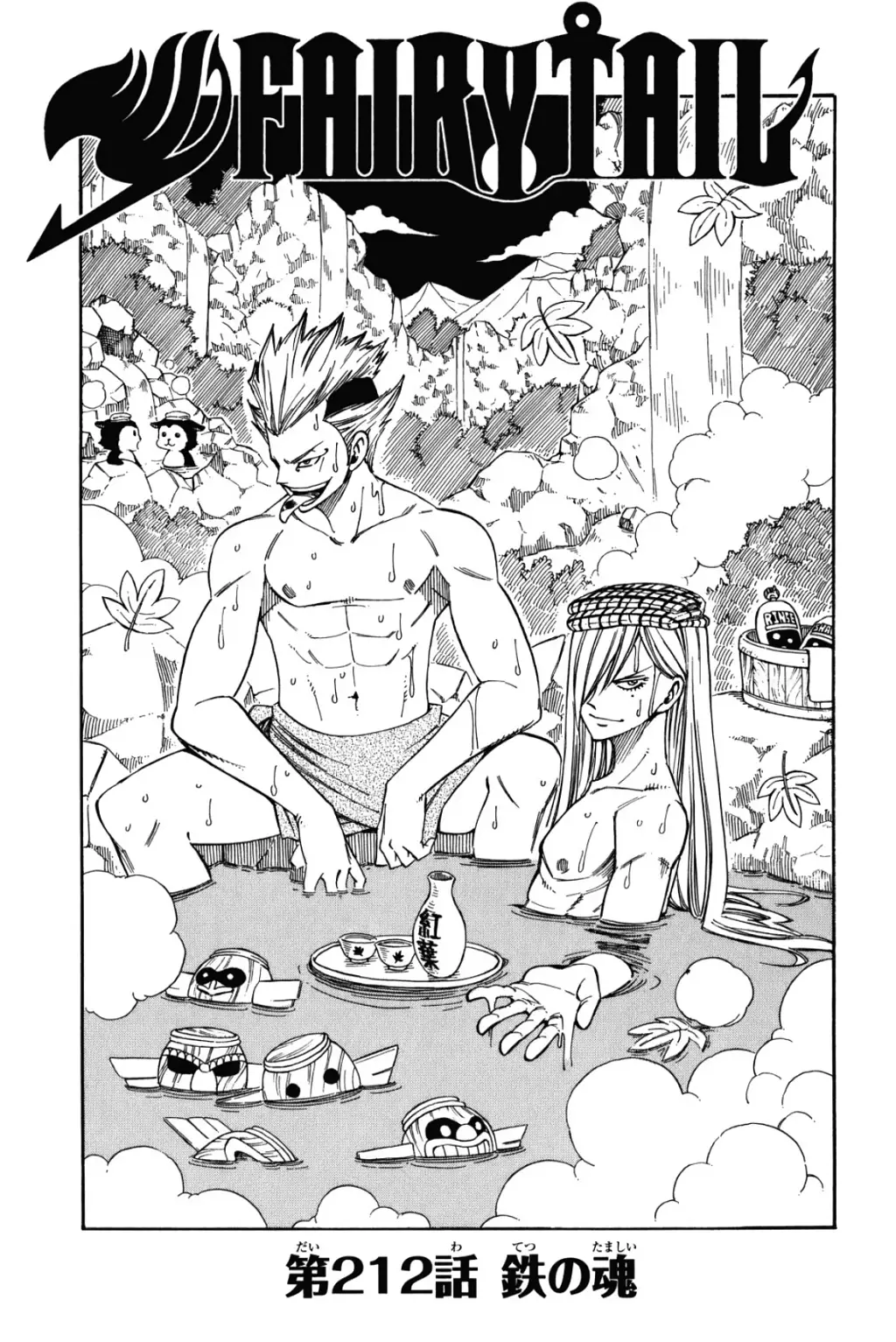 One last thing: look at that pair of cats in the background. So cute with their little towels at an onsen! Really nice cover for one of my fav mangas, Fairy Tail. Image extracted from Zerochan
One last thing: look at that pair of cats in the background. So cute with their little towels at an onsen! Really nice cover for one of my fav mangas, Fairy Tail. Image extracted from Zerochan
